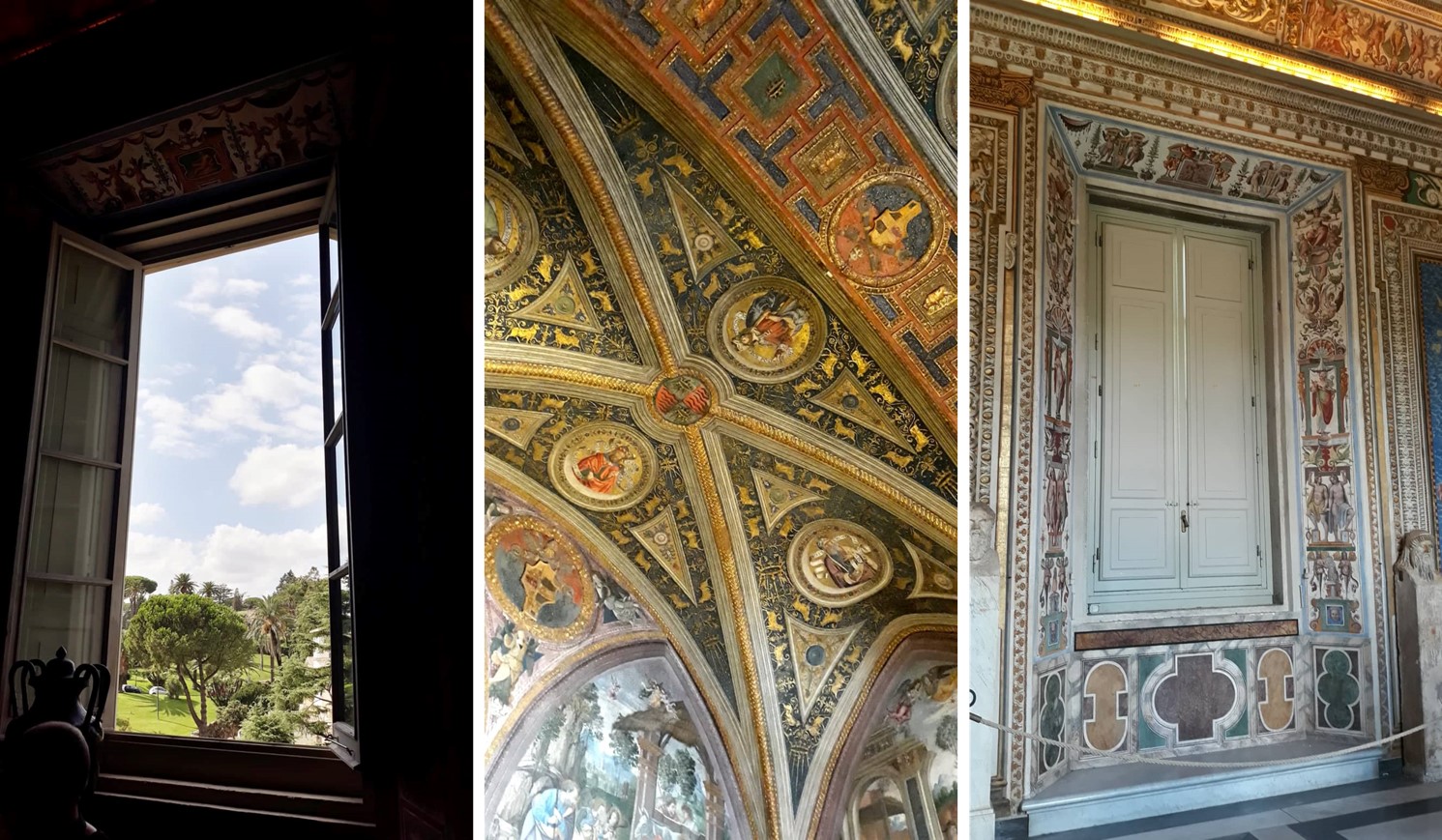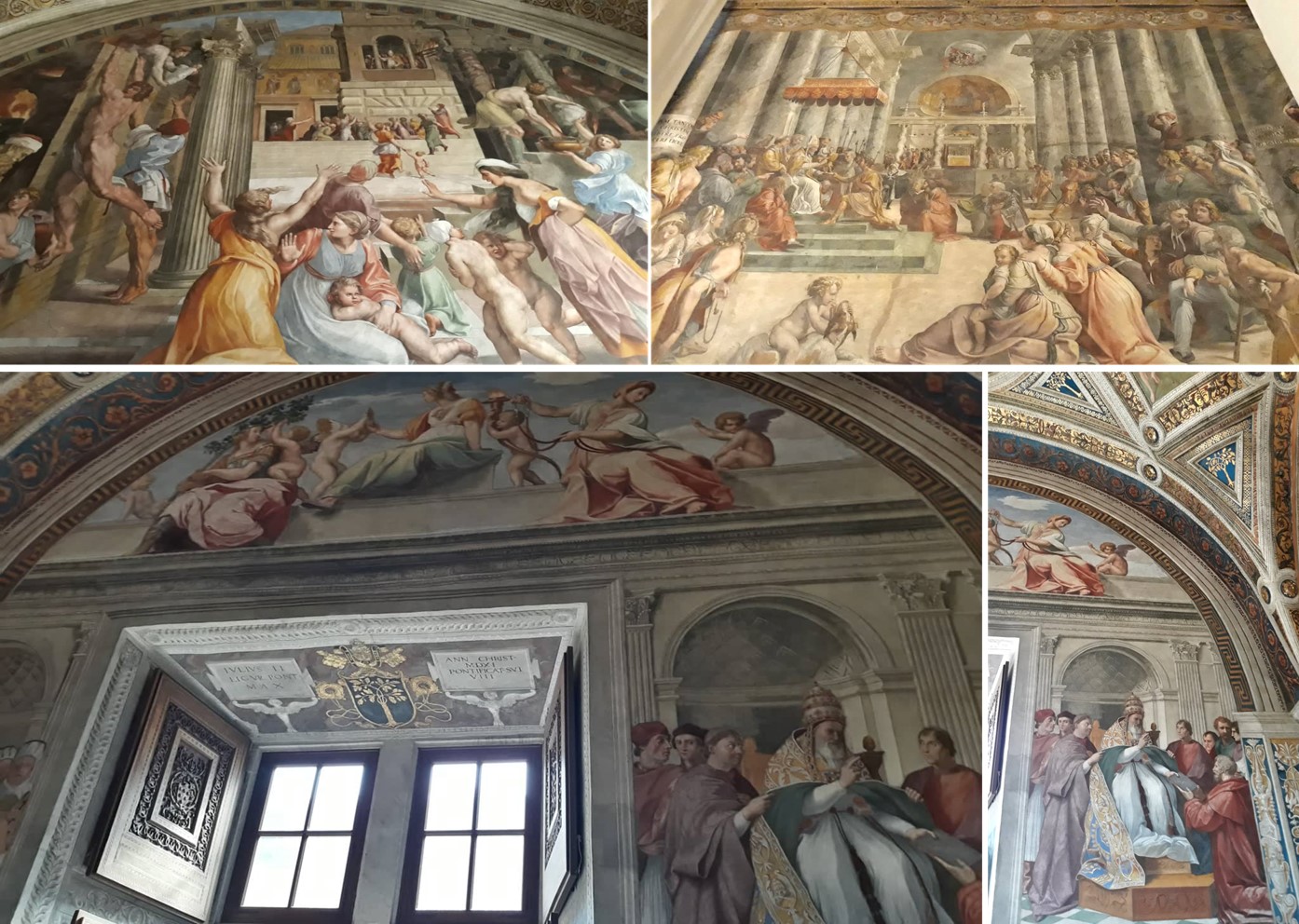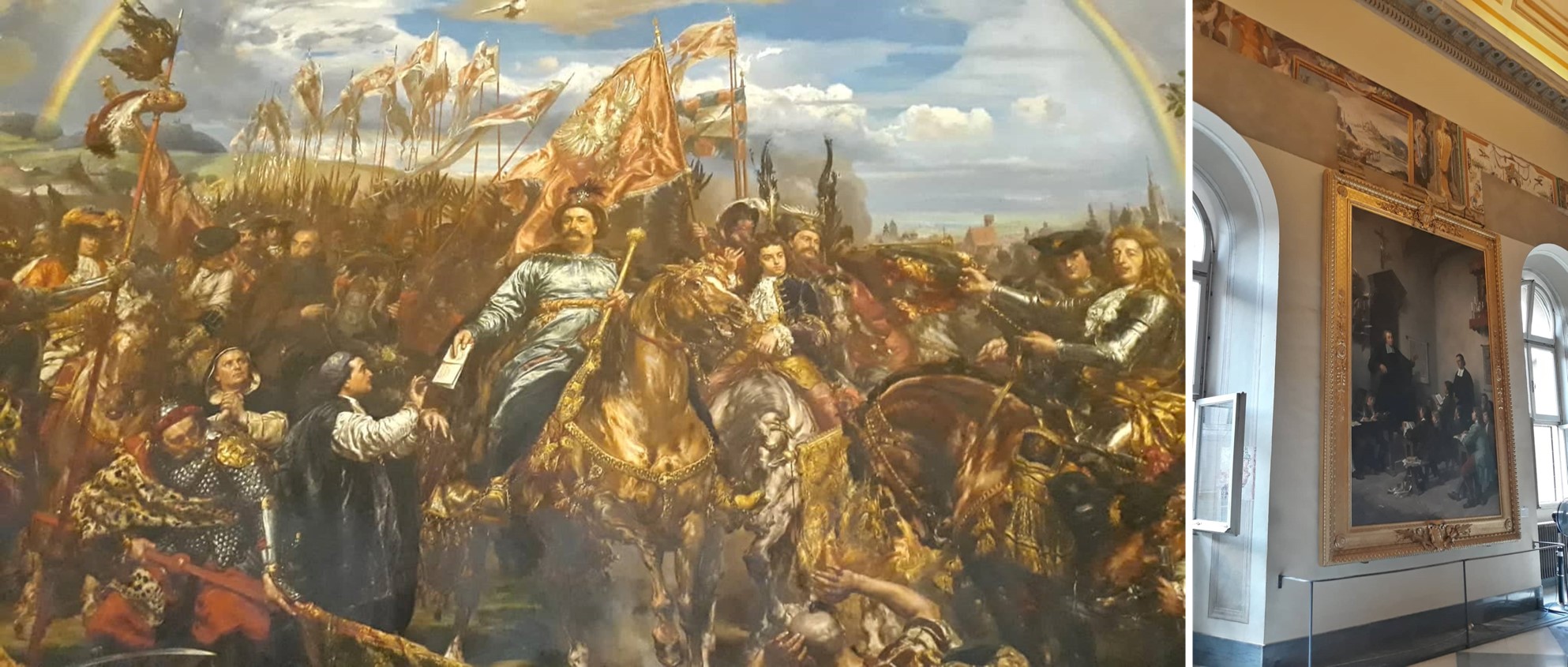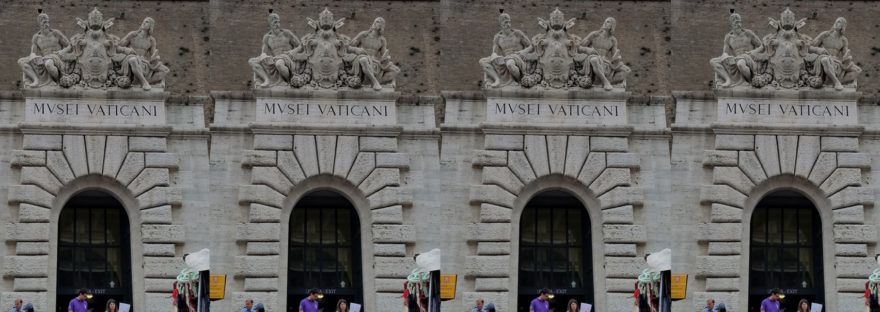When visiting Rome, you have to cross the borders to enter the “Stato della Città del Vaticano”, the Vatican City State. It was founded as a result of the Peace Treaty and Lateran Pacts in 1929. Until then, Rome and the Papal States were the sovereign nation of what we know today as Italy.

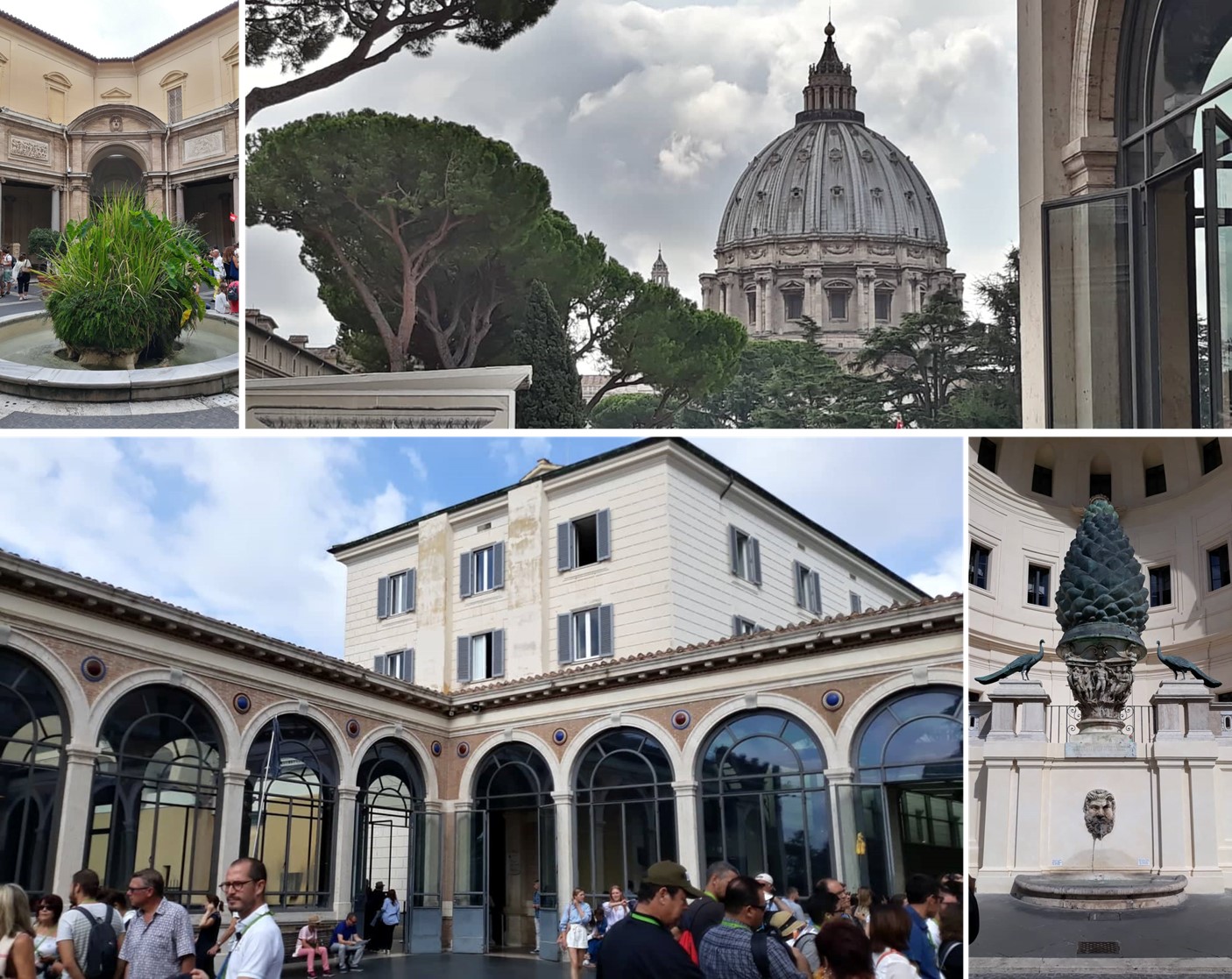
One of the entrances commonly used by tourists to access the Vatican is through the “Musei Vaticani”. The “Musei Vaticani” is really a complex of several museums dedicated to different types of works that include: paintings, religious artifacts, sculptures and much more. You can see works that are part of the buildings, which although separately, complement the works on display.
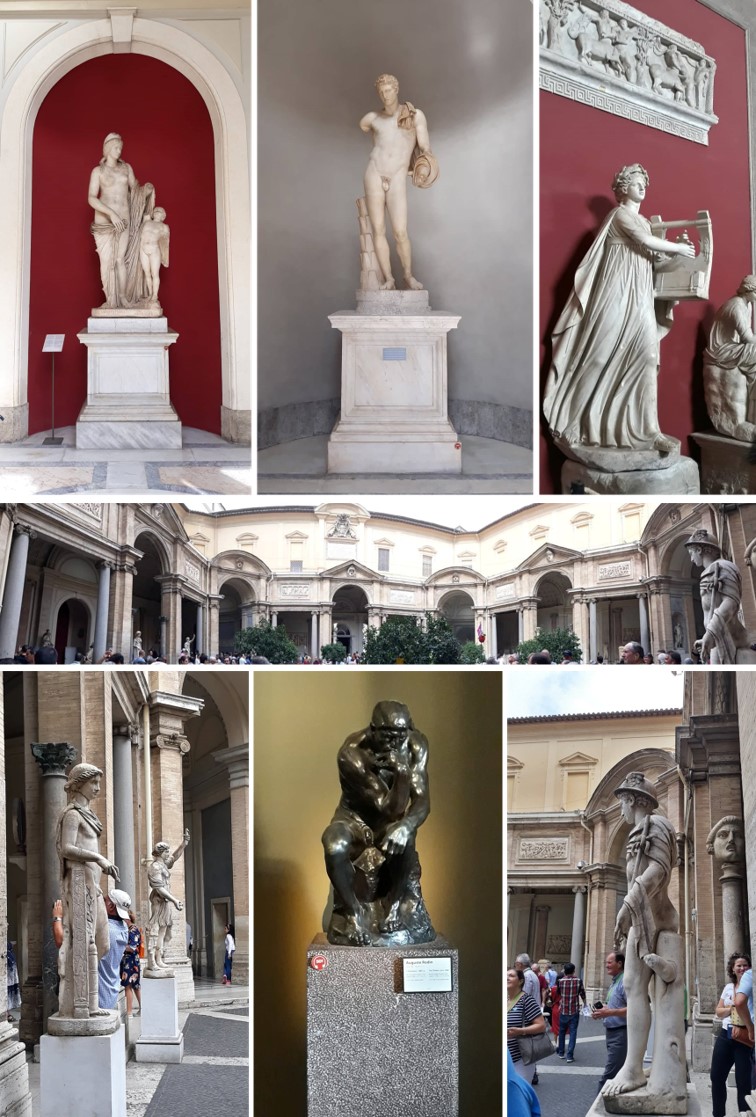
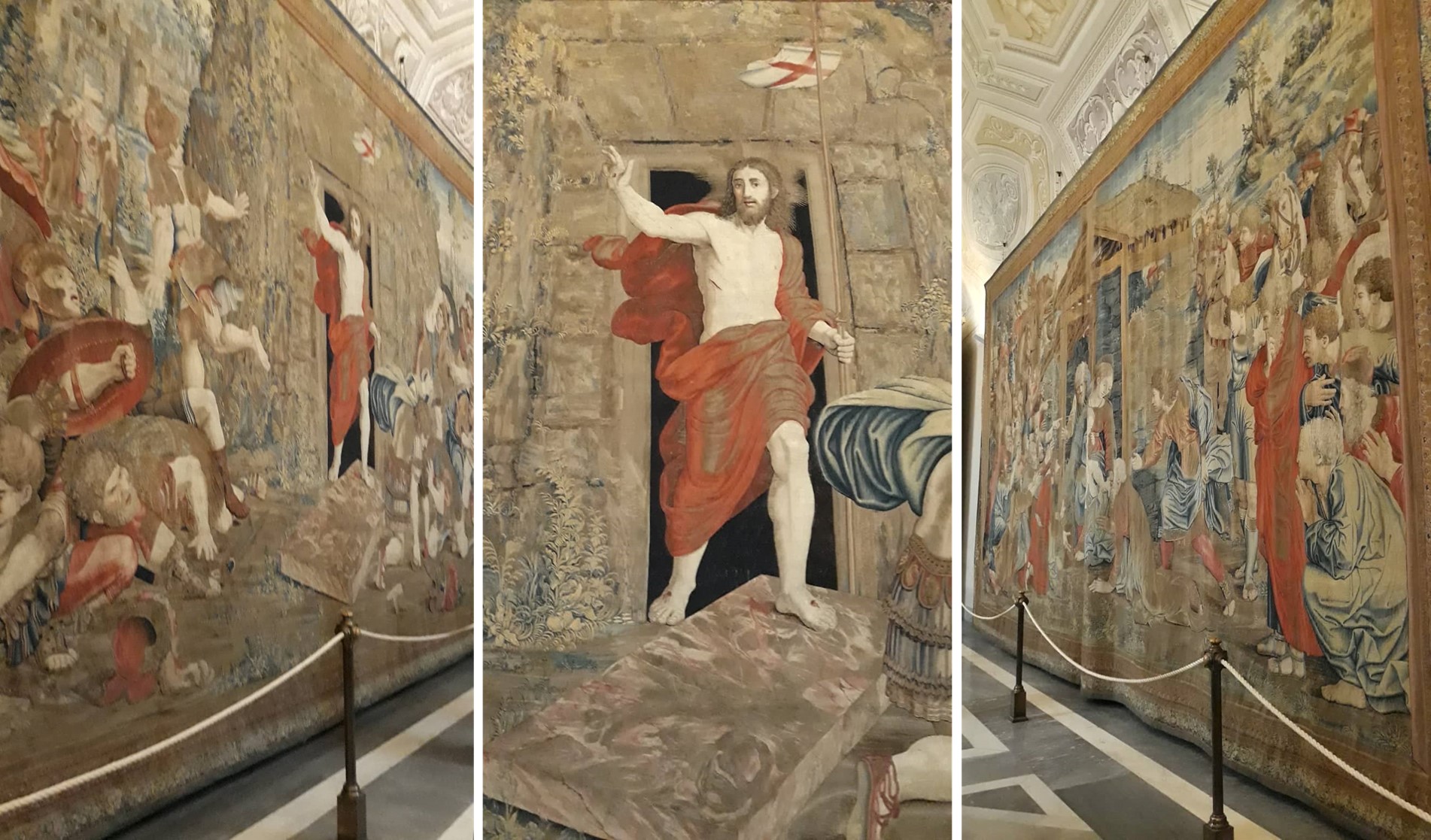
Among the museums to visit are: the “Pinacoteca Vaticana” (paintings), “Museo Pio (Pius VI) – Clementino” (Clement XIV), “Chiaramontiu” (founded by Pius VII), “Gregoriano – Etrusco” (founded by Gregory XVI), “Gregoriano – Egiziano” and the Historical Museum (founded by Paul VI). Museums have works by great masters such as Rafael, Leonardo da Vinci, Michelangelo, among others.
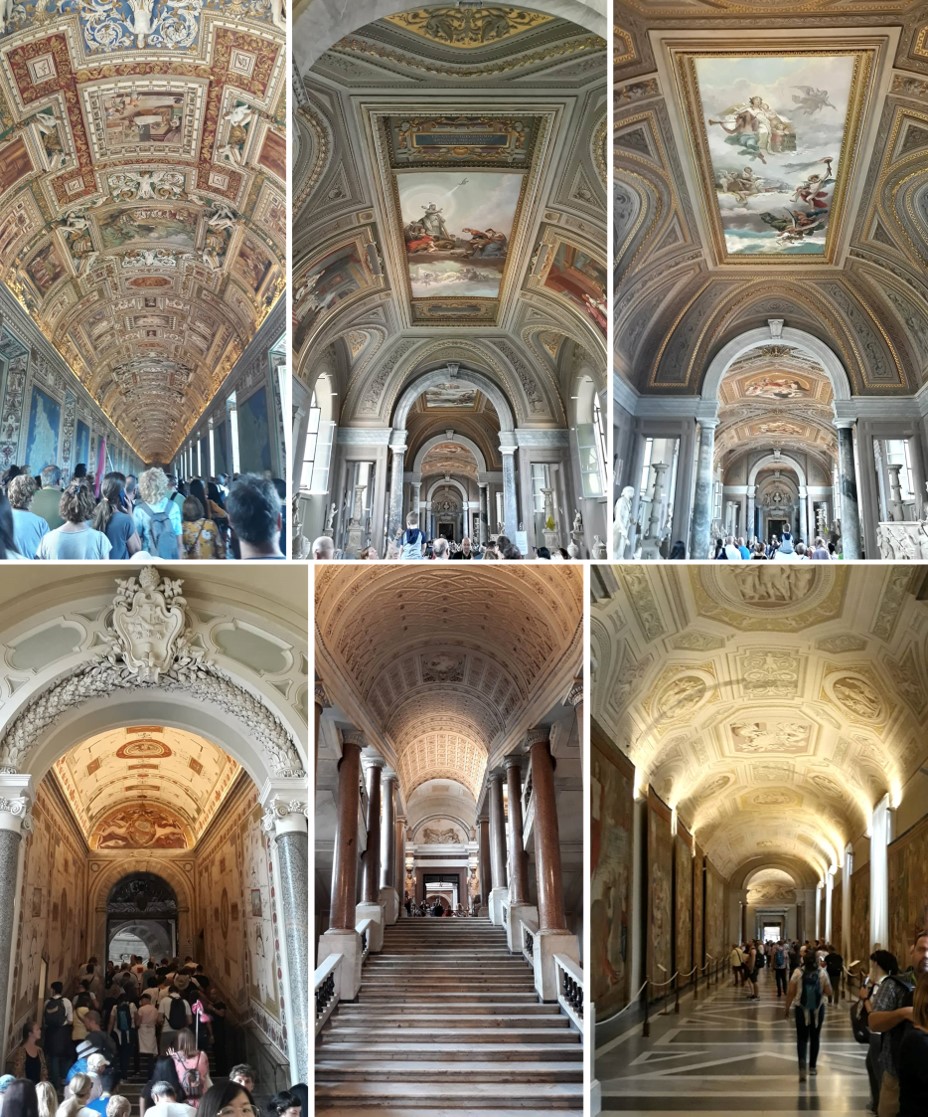
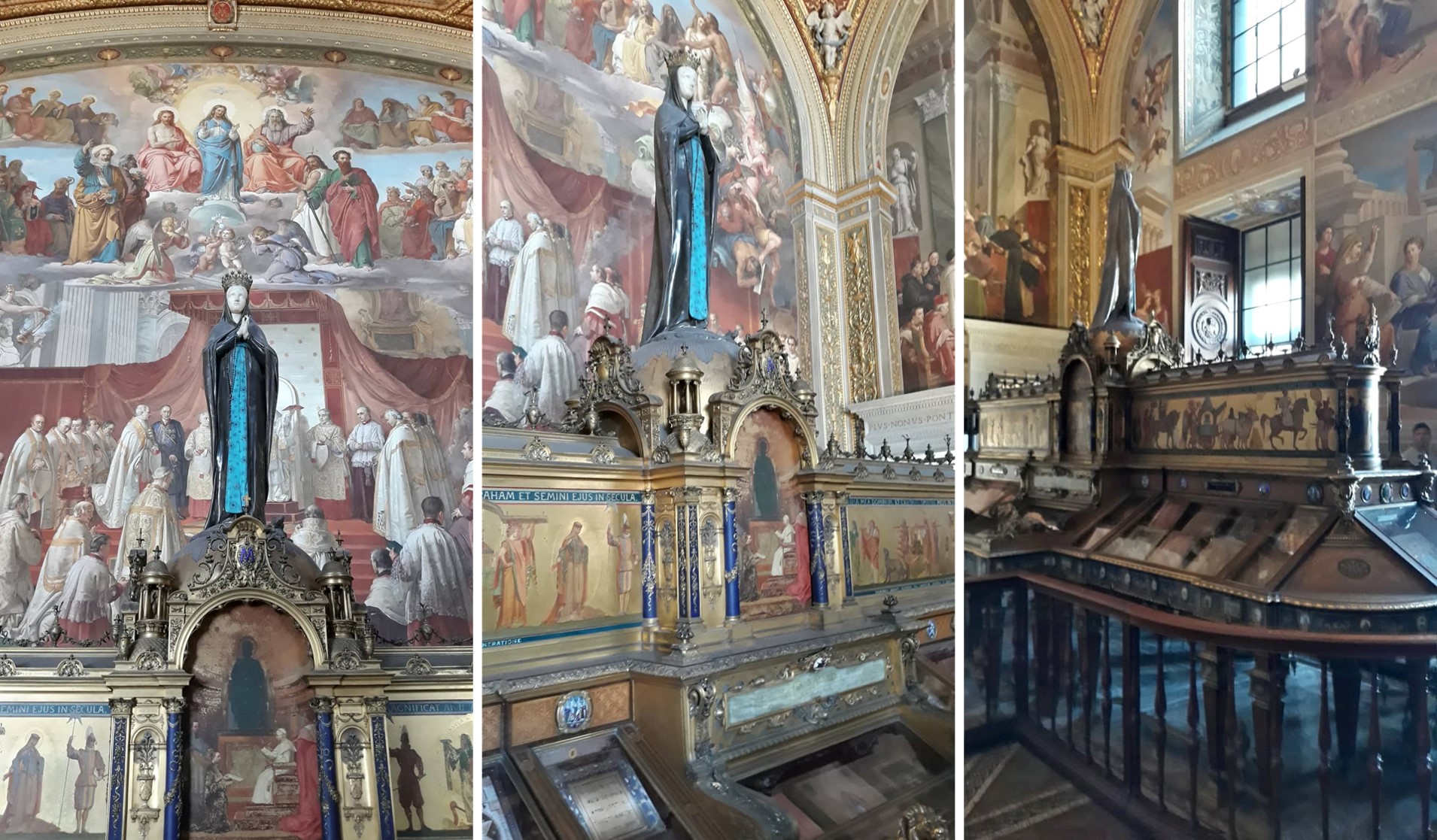

It is within a chapel, that we perhaps have one of the most impressive works, the “Cappella Sistina”. This is the official and private chapel of the Papal Palace, residence of the Pope. Renaissance painters who included Sandro Botticelli, Pietro Perugino, Pinturicchio, Domenico Ghirlandaio, Cosimo Rosselli and Luca Signorelli were participants in the creation of the frescoes of the “Cappella Sistina”. However, the chapel is recognized as the masterful pictorial work of sculptor Michelangelo di Lodovico Buonarroti Simoni, or simply known as Michelangelo.
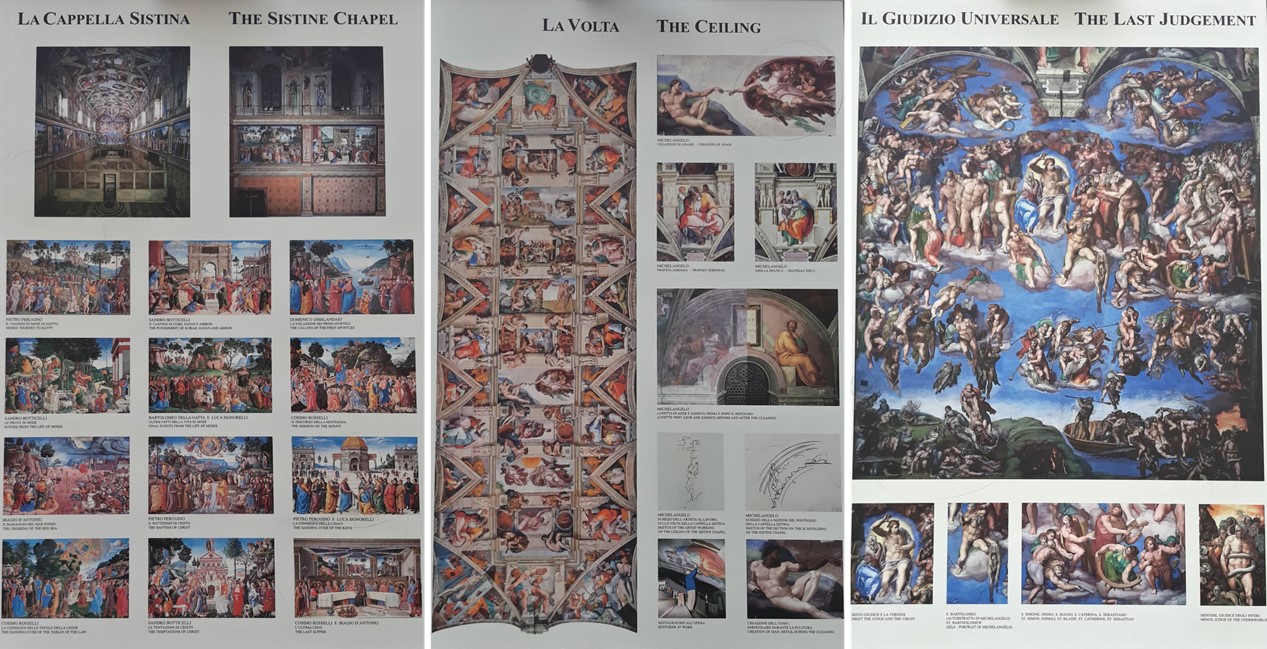
Michelangelo painted the vault of “Cappella Sistina” by order of Pope Julius II. The work of the “Last Judgment” is painted between 1536 and 1541 under the papal reigns of Clement VII and Paul III. All the fascinating works of the “Cappella Sistina” can only be enjoyed in person, being there. The taking of photographs inside the enclosure is not allowed, therefore one must record these images to one’s memory, images of apostles, sibyls, the Creation, the Final Judgment. The “Cappella Sistina” must be lived.

